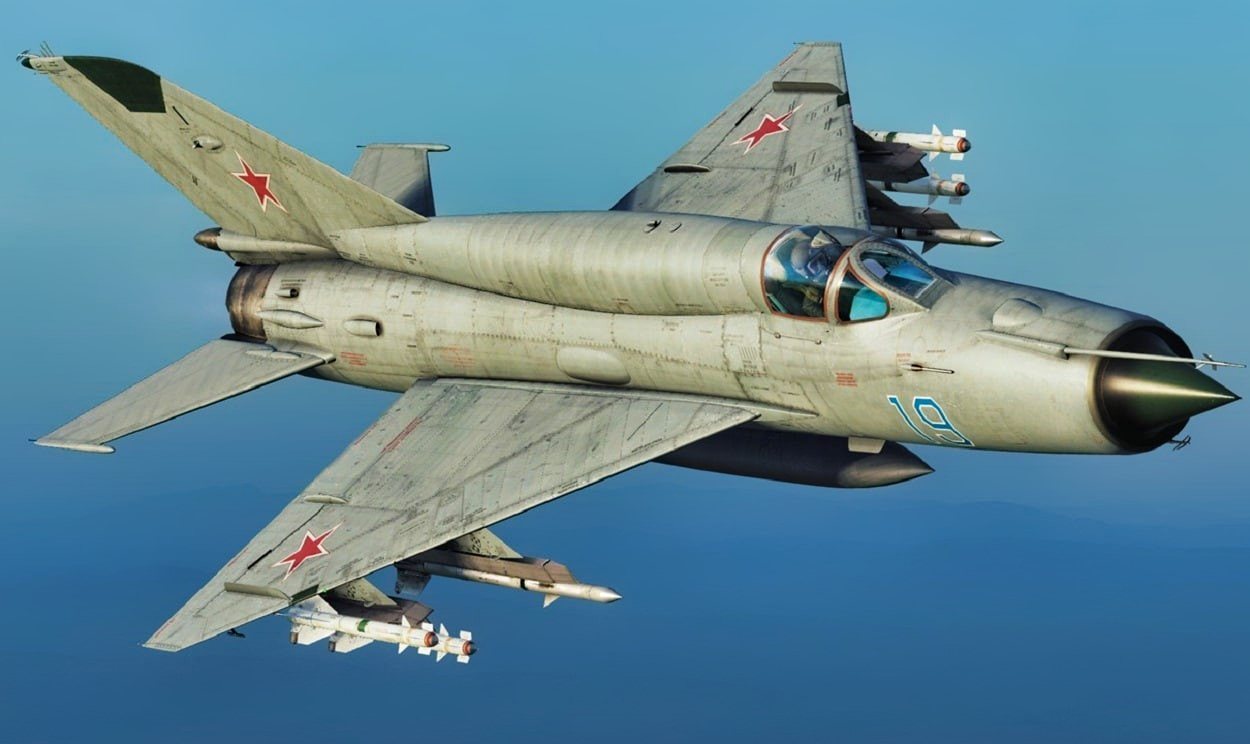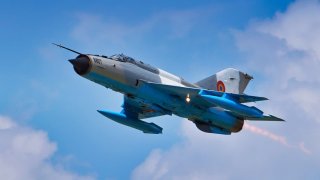Why the MiG-21 Fighter Jet Is Still Revered in Modern Warfare
The MiG-21 fighter jet, developed by Mikoyan-Gurevich in 1955, stands as a testament to Cold War-era engineering and military strategy
Summary: The MiG-21, developed by Mikoyan-Gurevich in 1955, stands as a testament to Cold War-era engineering and military strategy. Serving in over 50 countries, this supersonic fighter-interceptor was the most ubiquitous warplane of its time. Despite its simplicity, the MiG-21 was highly effective, notably during the Vietnam War, where it became a formidable adversary to American forces. Its agility and climb rate, combined with a small cross-section for enhanced stealth, made it a respected combat aircraft. Even as production ceased in 1985, the MiG-21 continued service, notably in the Serbian Air Force during the 1990s Balkans conflicts and the Indian Air Force, which plans to retire its fleet in 2025. The aircraft's longevity and effectiveness, even against technologically superior foes, highlight its significant impact on military aviation history.
MiG-21: From Soviet Skies to Modern Battlefield, an Aviation Icon
The MiG-21 is a storied fighter that has seen service not only in the old Soviet Air Force but throughout the world. First developed in 1955 and deployed into Soviet service in 1959, this was a cutting-edge supersonic fighter-interceptor. It was born at the start of the great Cold War when the world’s two superpowers—the United States and the Soviet Union—engaged in a lethal war dance that could have gone nuclear at any point over the course of the last half of the twentieth century.
The MiG-21 is the embodiment of the paranoia and insecurity that Soviet defense planners felt in the 1950s about the capabilities of their American rivals.
The Soviet design bureau that created the MiG, Mikoyan-Gurevich (where the MiG’s initials are derived from), was in its heyday at this time. The MiG-21 was probably the most ubiquitous warplane of its time. But Mikoyan-Gurevich made quite a name for itself as the builder of great warplanes throughout the Soviet Union’s existence.
Inevitably, Mikoyan-Gurevich would simply become Mikoyan. And, by the time things in the USSR were crumbling apart, Mikoyan had seen better days. Today, Mikoyan remains a key manufacturer in the Russian defense sector.
Although, it was long surpassed by its old Soviet era rival, Sukhoi.
The MiG-21 and Its Service Record
But the MiG-21 is a model fighter. Simple in its design and straightforward in its mission, over 50 countries have used this craft. As for the design of the MiG-21, as noted above, it was relatively simple.
It had a single Turnansky engine with about 15,000 pounds of thrust. The plane could travel at about Mach 2. It carried a maximum of 3,310 pounds of ordnance into battle. The MiG-21 was a delta-shaped craft and was dubbed “Balalaika” by the Russians because of its resemblance to the stringed instrument of the same name.
For American pilots, this was the most common warplane the North Vietnamese deployed against them throughout the Vietnam War. North Vietnam’s MiG-21 was more agile than its main American rival, the F-4 Phantom. The MiG-21 downed about 50 American planes during the war. The Americans, however, aced 68 MiG-21 birds over the course of the Vietnam War.
That is likely a byproduct of the superior flying capabilities of US pilots over their North Vietnamese rivals than it is an indictment of the MiG-21’s engineering or capabilities.
The MiG-21 came in multiple variants over the course of its long lifespan. Some were one-seaters, others were two-seaters. Doug Richardson, who wrote the 1985 book, Red Star Rising, quotes a Western test pilot who flew the MiG-21 as claiming that, “in war [he] would bet only on the MiG-21.” The reason that Western test pilot made the controversial comment (most observers have been highly dismissive of most Soviet and, later, Russian technology) had to do with the MiG-21’s climb rate, small cross-section (making the plane stealthier than its rivals), and overall agility of the bird in combat.
Mikoyan ended the production line in 1985. Yet, the MiG-21 continued its storied service. The Serbian Air Force deployed them throughout the bloody wars that were waged in the Balkans during the 1990s (having inherited these units from the Soviet Union).

The MiG-21 Still Serves in the Indian Air Force
The Indian Air Force has consistently operated the MiG-21 since 1965! Although, the Indian Air Force has steadily phased these systems out in favor of more modern planes. The IAF has indicated that its MiG-21 platform will officially be retired from service next year, at some point in 2025. This is an astonishing fact, considering that India is the largest democracy in the world, it possesses an increasingly modern military, and the country has the fifth-largest economy in the world (in GDP terms). India has gotten the bang for its rupee from this bird.
India’s MiG-21F variant participated in the 1971 war over Bangladesh between India and Pakistan (at the time Bangladesh was known as East Pakistan). Back in that conflict, the MiG-21F was used decisively by the IAF to launch surgical strikes against Pakistani military leaders in Dhaka, the capital of Bangladesh. These strikes ultimately convinced the Pakistanis to surrender to India in that war. Thus, Bangladesh was granted its independence from Pakistan after hostilities between Pakistan and India ended.
More recently, in 2019, the IAF claims that one of its MiG-21 fighters shot down a far more advanced Pakistani F-16 in combat before the MiG-21 was downed. The Pakistani government has denied this claim. The Indians have never proven the claim. If true, however, it is truly fantastic, given that the F-16—even one serving in the Pakistan Air Force—is technologically superior to that of the old MiG-21.
There are only a handful of warplanes that can boast a similar prolonged track record (the US Air Force’s B-52 Stratofortress, for example). The MiG-21 is not to be underestimated or disrespected. It has far too much of a stellar service record to be treated with anything other than respect and admiration.
About the Author
Brandon J. Weichert, a National Interest national security analyst, is a former Congressional staffer and geopolitical analyst who is a contributor at The Washington Times, the Asia Times, and The-Pipeline. He is the author of Winning Space: How America Remains a Superpower, Biohacked: China’s Race to Control Life, and The Shadow War: Iran’s Quest for Supremacy. His next book, A Disaster of Our Own Making: How the West Lost Ukraine, is due October 22 from Encounter Books. Weichert can be followed via Twitter @WeTheBrandon.
Image Credit: Shutterstock.


